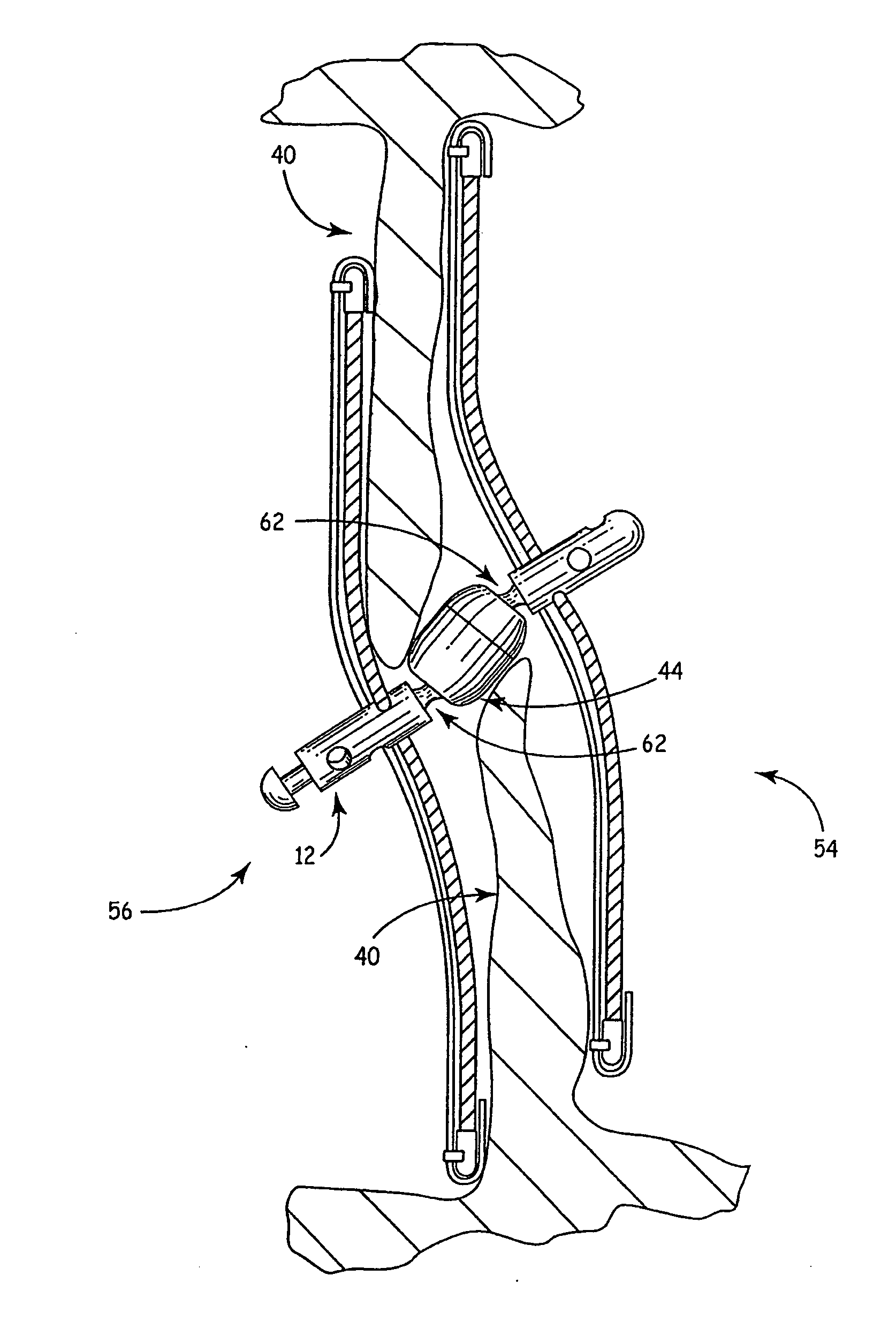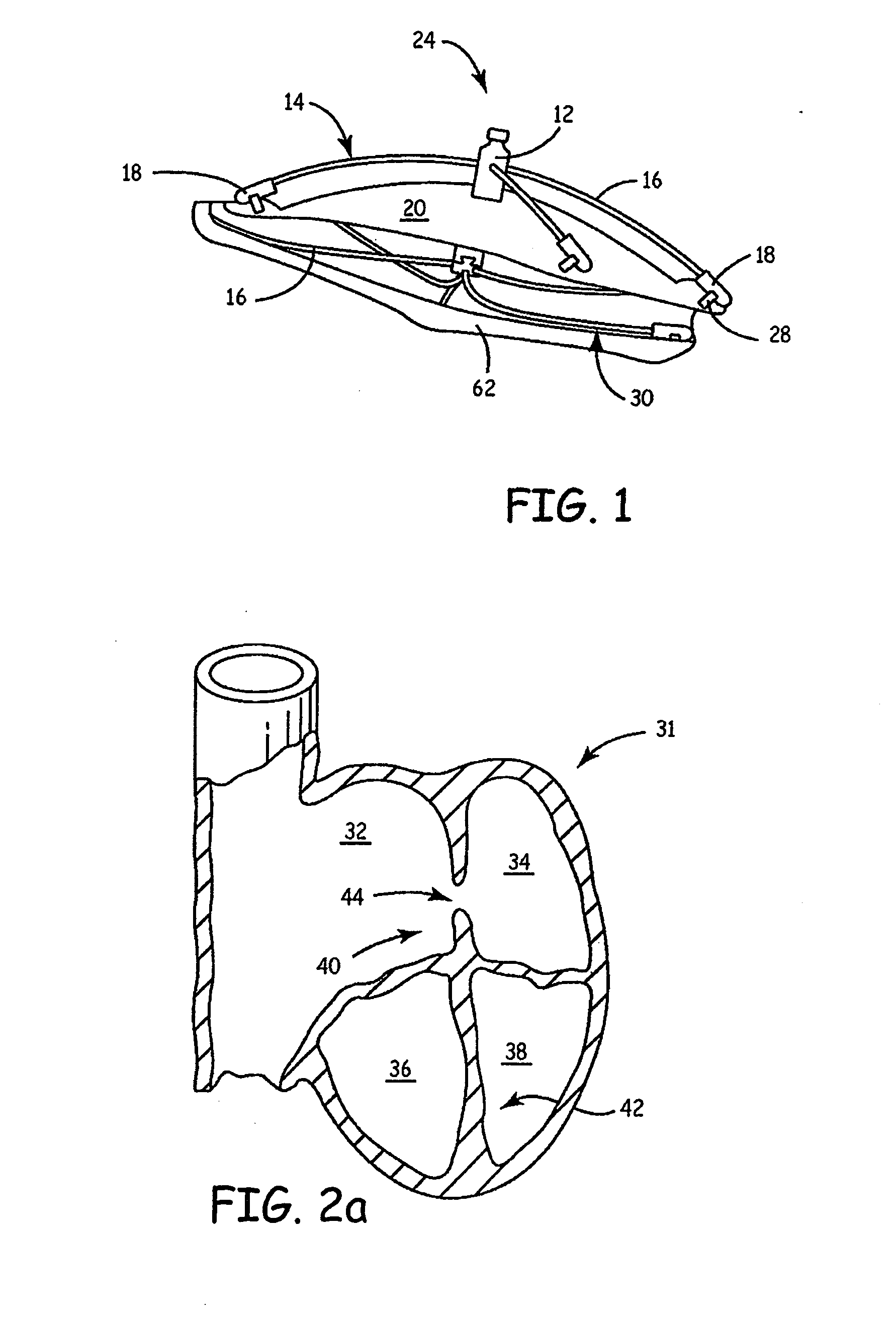Articulated center post
a center post and occlusion technology, applied in the field of occlusion devices, can solve the problems of reducing the ability of the device to occlude the defect, difficulty in ensuring that the occlusion device conforms to the contours of the defect, and requiring open heart surgery for certain cardiac defects in adults and children, so as to achieve the effect of effectively closing a physical anomaly, increasing the ability of the occlusion device, and more accurately conforming to the d
- Summary
- Abstract
- Description
- Claims
- Application Information
AI Technical Summary
Benefits of technology
Problems solved by technology
Method used
Image
Examples
first embodiment
[0055]FIG. 5a is a side view of second center post 74 with rotation-inhibiting capabilities. Shown is knob 24, three holes 80, second center post 74, head 120, first neck 122, body 124, second neck 126, and pegs 138a-c. Peg 138d cannot be seen from this perspective. As described with reference to FIG. 1, three holes 80 are drilled through second center post 74 to allow for attachment of wire arms 16.
[0056] Head 120 located at a first end of second center post 74 is connected to body 124 of second center post 74 at first neck 122. Knob 24 is located on the second end of body 124 and is connected to body 124 by second neck 126. To assist in assembly, which is discussed in more detail below, the body 124 of second center post 74 is preferably smaller in diameter than head 120. Knob 24 has a smaller diameter than both body 124 and head 120. For example, head 120 may have a diameter A of about 1.35 millimeters, body 124 may have a diameter B of about 1.2 millimeters, and knob 24 may have...
second embodiment
[0076]FIG. 11 is a perspective side view of a center post with rotation-inhibiting capabilities. Shown is knob 24, center post 74, holes 80, head 120, first neck 122, body 124, second neck 126, and channels 139a-139b.
[0077] In this embodiment, head 120 includes channels 139a-139b located concentrically around the rounded surface of head 120. Channels 139a-139b may be evenly spaced to provide better articulation when coupled with a center connector, as described in FIG. 12. Center post 74 is preferably formed of a hard metal, such as titanium. Channels 139a-139b may be machined directly into the titanium, using a process such as electrical discharge machining.
[0078] Although in FIG. 11, head 120 is shown with two channels 139a-139b, the present invention is not so limited. Head 120 may include any number of channels 139a-139b, including as few as one channel 139a-139b. In addition, while this embodiment is shown with respect to center post 74, which includes second neck 126 and kno...
PUM
 Login to View More
Login to View More Abstract
Description
Claims
Application Information
 Login to View More
Login to View More - R&D
- Intellectual Property
- Life Sciences
- Materials
- Tech Scout
- Unparalleled Data Quality
- Higher Quality Content
- 60% Fewer Hallucinations
Browse by: Latest US Patents, China's latest patents, Technical Efficacy Thesaurus, Application Domain, Technology Topic, Popular Technical Reports.
© 2025 PatSnap. All rights reserved.Legal|Privacy policy|Modern Slavery Act Transparency Statement|Sitemap|About US| Contact US: help@patsnap.com



